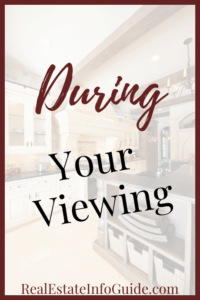It’s essential that you know what to look for when buying a property, You are investing a considerable amount of time, money and emotion into your purchase, so it has to be the best property for you. I know it’s easy to get caught up in the excitement of a beautifully restyled bathroom or the funky basement man-cave, but there is so much more to look for when buying a property. Let me give you a heads-up and take you through the essentials.
Want to know what to look for when buying a property?
- Indicators of neighborhood suitability.
- Signs of possible structural problems
- Details which determine future repair, renovation, and repair costs.
- Clues about the current owners level of care for the property.
- Clever staging which clouds your objectivity
- DIY that could be a sign of hidden issues.
These items not only help you decide whether or not to buy a property, but your observations will also prompt you to ask further questions of your real estate team, plan how much money you might have to spend on the home and provide points with which you can negotiate on price.
What To Look For When Buying A Property
Let’s jump straight in by taking a look at the things everyone should look for when buying a property. Admittedly, not every item in this section will apply to every person or every property. However, you want to make an informed decision and invest your hard earned dollars in the most appropriate property possible, so consider every point in this article that applies to your prospective home.
Many of the items in this post have long lists attached to them, which can be off-putting. BUT
Don’t Panic
You don’t need to memorize lots of questions. Think of them as prompts to get you and your brain into “home observation mode.”
For example, in the roof section, there are a dozen or so questions to consider. Do you have to write them all out and tick them off individually? NO. Can you take 30 seconds to look up at the roof and see immediately if there are any problems on the list? YES.
 Before Your Viewing
Before Your Viewing
Knowing what to look for when buying a property begins before you leave for a viewing. Thanks to the internet we can quickly uncover background information about properties and their surrounding areas.
Start by hitting up Google maps and take an aerial view of the area. Ask yourself:
-
- Are there any empty lots nearby? If there empty lots, you might experience excessive noise and dust from building work in the future. Alternatively, the new neighbor of the home you are about to view might be a cell phone tower or something similar.
- Can you see water, such as lakes, rivers, ponds, or creeks, close to the property? A small river a few blocks away can end up being flood water in the basement. If there are natural water features in the vicinity take the extra step and investigate if the neighborhood has suffered from flooding previously or if the home is on a designated FEMA flood plain.
- Are there any sources of excess noise? You might not always hear traffic noise when viewing a home. Variabilities in weather conditions, time of day, traffic volume can all impact how noisy, or otherwise, a property may seem to be. You should also be on the lookout for train tracks from which you might hear engine noise and horns 24/7 or businesses such as bars and take-outs which are quiet during the day but loud at night.
- Will an amenity become an annoyance? Schools, parks with sports fields, community facilities, all of these may be an excellent draw for you, but they are also a draw for others and can end up being the source of excessive noise and traffic. Will, people, be parking outside your home at weekends and holidays? How about school day traffic and parking?
- Do you notice any potentially “fragrant” businesses or facilities? A municipal rubbish dump fairly close by is an obvious red flag, but there are plenty of other “stinkers” out there. Restaurants and other food outlets may exhaust cooking smells, while that cool little craft brewery might not be so appealing when your home smells of yeast and beer 24/7.
- Is the property on a “cut-through” road? Having fallen in love with a home on a quiet back road, a friend of mine narrowly avoided a colossal house buying mistake by visiting again at a different time of day. From 2 pm onward the quiet roadway was transformed into a veritable raceway.
While you’re online, take a virtual trip around the neighborhood via Google Street-View. It may not be entirely up to date, so you shouldn’t use anything you see as a deal breaker, but you can get a feel for how busy, or otherwise, the area is.
Not only that
You can use the trip planner within Google Maps to plot journeys by car, cycle, transit, and foot. This way you can find out how long it will take to travel to work, school, or any other regular destination. Set the journey for different times of day, and you will be able to see traffic levels, how long the trip will take, etc.
WAIT, You’re not done yet
On the day of your viewing, arrive early enough to explore the surrounding area. Remember, you may not be interested in what happens in the neighborhood, but that doesn’t mean it won’t affect your enjoyment of a home. You should also ponder the resale value. This may seem odd, you haven’t moved in yet, and I’m suggesting you think about moving out. However, unless you’re planning for this to be your “Forever Home,” consider how likely someone is to buy the home at a later date.
So think about:
- The general feel of the area. If the neighborhood appears to be slightly rough but “up and coming” it might be an excellent investment. However, If it looks like it was once a pleasant place to live but now, not so much, you should think twice.
- The maintenance levels of nearby homes. Is it is important for you to live in a neighborhood where everyone cares for their home and garden? If so, having neighbors who do not care as much as you can negatively impact your quality of life over the years.
- What’s in neighboring yards? Lots of vehicles might indicate a large family with plenty of coming and going. Multiple homes with toys in the garden can signal a family friendly neighborhood. You get the idea.
- Are there areas that could attract pests? Dumpsters at the rear of commercial buildings can attract mice and rats. Water sources could serve as a breeding ground for mosquitoes. Another under-recognized danger sign is low hanging electrical wires or branches which could be used by rats or mice as a pest highway onto your roof and into your home.
Finally
This will seem like an odd point but stick with me on this.
Which direction does the home face?
Yes, I am saying you should find out which direction each side of the property faces. At night or in the short, chilly days of winter this might not be a big deal, but in summer it can change a home completely.
The south-facing side of the house will be lighter and sunnier but the flipside of this is, these rooms can get excessively hot and stuffy. Meanwhile, the north facing side will have hardly any sun in the summer, resulting in an interior that’s much darker and cooler and, depending on the climate, may even be prone to damp.
 During Your Viewing
During Your Viewing
So, you’ve arrived at what might your new home, and it’s time to get inside right?
Wrong
While you are still at the curbside, there are still plenty of things to look for when buying a property. Let’s start with the yard.
- Are there any trees? Larger, more mature trees sometimes need costly, professional maintenance. Roots can cause damage to the foundations, water mains, or sewer lines while overhanging branches can cause damage to the roof or provide a way for pests to make their way into the house. Falling leaves need raking in the fall and might clog your gutters, while sap from the tree coats everything below in a sticky, dirty mess.
- What about plants and the lawn? Will that beautiful landscaping need lot’s of work to stay looking good? Will you be running up huge water bills to keep everything looking lush? Are there large numbers of a specific plant type, such as roses, fruit trees, etc. which will need special knowledge to take care of?
- How well maintained are the drive, pathways, retaining walls, and any other hard surfaces? You should expect routine problems such as random surface cracks, sun bleaching, and similar cosmetic issues. However, can you see any areas that are sunken, where water might pool? Are walls and steps in good, safe condition or will they need maintenance or replacement in the near future?
- Does the building appear to be structurally sound? Hairline cracks are normal but even small gaps where two areas of wall join, or in places like the edge of the windows, corners of the doors, etc. could indicate an issue with the foundation. If you spot any cracks or crumbling, make a note of it and follow-up with your real estate agent or home inspector and discuss whether a structural survey would be appropriate.
- How are the drainage and grading? If it has been raining, you might be lucky enough to spot any pools of water or areas which experience poor drainage. In the absence of a convenient downpour, you can look for:
- Water line marks around the foundations
- Areas of the yard where soil has been washed away
- Mulch that has migrated from one spot to another in the flower beds
- Places on the hard surfacing where dirt or debris has flowed or pooled
- Poorly maintained, dirty, broken, or missing gutters and downspouts
- Are there any signs of pests? Do you notice areas of flattened foliage that may indicate a pest highway? Can you see dirty or greasy looking patches in areas where the wall meets the roof or foundation, or in spots where pipes or vents breach the structure?
The Roof
The crowning glory of your home, or maybe the drab hat, depending on the roof in question, is an often overlooked, yet critical element of your property. Your roof provides protection from the elements to the rest of the structure and for the family which lives under it.
In addition, the roof is a costly item to maintain, repair and replace so buyers should always be exceptionally thorough in their examination and assessment of this part of the home.
No, don’t worry, I’m not suggesting that you carry a ladder and safety harness to every place you view and climb up onto the roof for a full-on inspection. That will be something for a professional to do if you end up making an offer. What you do need to do is stand back and take a good, long hard look up. Now ask yourself:
- How does the roof look, generally? Does it seem to be in good repair?
- Are there any tiles or shingles missing?
- Can you see any obvious cracks, gaps, or worn spots?
- Are there any areas that are sagging?
- Is there any indication of algae or moss?
- Is the flashing straight and free form dents or twists?
- If there is a chimney, is it straight?
- Does the chimney have a cap on it and if so, does it look to be in good shape?
- Can you see vents on the roof?
- From what materials is the roof made? This will have an impact on your long term maintenance, repair, and replacement costs. A roof can be repaired, “reroofed” or replaced. In the case of “reroofing,” a new set of shingles or tiles can be laid on top of the existing roof. This option is cheaper than a full roof replacement because it doesn’t require the roofer to stip off and dispose of the old tiles. However, you can only reroof once, so if the home which you are viewing already has two layers, the next time it will have to be stripped and entirely replaced.
Although it may not be clear from the ground, which materials have been used in the construction, it is most likely to be one of these five.
| Material | Cost SqFt | Pros | Cons | Lifespan |
| Asphalt | $70-$160 |
|
|
15-30 yrs |
| Metal | $120-$900 |
|
|
20-40 yrs |
| Concrete Tile | $150-$250 |
|
|
30-50 yrs |
| Wood | $250-$600 |
|
|
15-30 yrs |
| Clay | $300-$600 |
|
|
50-100 yrs
Or more |
| Plastic Polymer | $400-$1,200 |
|
|
35-50yrs |
| Slate | $500-$1,700 |
|
|
50-100yrs
Or more |
Doors And Windows
Doors and windows are an excellent indicator of the overall quality of a home. Good quality doors and windows are expensive, and a homeowner who has laid out a significant amount of money for them is likely to have taken good care of the entire property.
One word of warning though.
Doors and windows are only as good as the quality of the installation. If the homeowner has purchased high-end items, but they have been poorly installed or with the wrong ancillary products you might still encounter issues.
What to look for:
- Do the frames have cracking or peeling paint?
- Are there any obvious cracks or chips in the glass or frames?
- Can you push your fingernail into a wooden frame? If so it might be rotten.
- Is there any condensation between the panes of the double glazing? If so the seal between the panes has failed, and the entire unit will need replacing.
- Can you see any sign of condensation, damp, or mold around the frames?
- Are there any marks on the frame, or around the windows that could indicate a water leak?
- Can you feel a draft around the edge of a window or door?
- Are the windows still an older single pane style?
- Do areas of carpet or wall near the windows look especially faded? If so they could be letting in higher levels of UV light.
- Are the fixtures and fittings on the doors and windows unusual? If so they may be costly to replace.
Testing, Testing, One, Two, Three
Many of us are uncomfortable touching or testing things when we view houses. It can feel rude or invasive to start opening cupboards or looking into closets.
Don’t let embarrassment stop you from doing this.
You are contemplating a significant investment in this property, and as such you are more than entitles to do everything you can to ensure you are making a sound decision. So, with that in mind:
- Open and close the windows. Check for smooth running or any signs of sticking. Ensure any locks, handles, and other fastenings are in good working order and safe. Wooden frames which stick could be swollen with moisture.
- Try the doors. Doors that stick or seem to be unevenly set in the frame can be an indicator of foundation issues or excessive moisture. Loose handles and creaky hinges can indicate a general lack of care and maintenance.
Plumbing
The kitchen and bathroom are the rooms most likely to have issues lurking under the surface, so don’t be put off the scent by a beautifully shaped sink, or a multi-directional shower. When installed correctly these items can give years of pleasure, but if they have been put in place by someone without the appropriate skills, they can be the source of endless headaches.
How do you avoid this?
Begin by turning the faucets on and off, checking to see if they move smoothly and that the water pressure is acceptable. If there are single hole faucets, which combine the spout and the mixer handles into one unit, test how hot or cold you can make the water. Put the plug in the sink and ensure it seals tight enough to retain the water then let out the water and check for any nasty smells that are stirred up.
In The Bathroom
-
- Try the flush on the toilet, make sure the handle isn’t shaky and that the water flows well, low pressure could be a sign of a plumbing problem.
- Open the cupboard under the sink. Pay close attention to the pipework and look for any indications of leaks, such as a discolored area, or damp smell.
- Ensure the areas around the bath and/or shower are well sealed and that, again, there are no signs of leaking water.
- If there is a shower enclosure don’t be afraid to open and close the door.
In The Kitchen
-
- Open and close random, if not all, of the cabinets and drawers to check for smooth running and operation.
- Look into the cupboards under and on either side of the sink, dishwasher, fridge, and freezer and check for any signs of water damage which may indicate previous leaks.
SIgns of leaks and plumbing problems are not confined to kitchens and bathrooms. There may be watermarks or spots on walls or ceilings in any room which can indicate a fault behind the drywall. Another possible indicator is an odor in the property. This can be specifically “damp” smelling, or it may be “earthy, ”moldy, or rotten smelling.
If the water heater is in the attic, it is likely that it is an older model and will need replacing sooner rather than late.
Heating, Ventilation, And Cooling
Your home should be a comfortable temperature at all times of the year, and the air you are breathing should be clean, safe, and healthy.
Forced Air Systems
If the property has a forced air system take note of how many vents there are, where they are placed within the rooms, and how well maintained they are. Be on the lookout for rust around the vents which could indicate moisture issues.
Look down into a vent or two and check they are not excessively dusty or dirty. If they are, it could indicate a lack of maintenance and/or a failure of the current homeowner to change filters according to recommended schedules.
Excessive dust in the property could indicate similar issues.
But Wait. There’s More.
Look to see if the furnace has maintenance records and if it looks to be in a generally good state of repair. If you move forward with an offer on the property, then is the time to solicit a professional inspection of the system.
Hot Water Heating Systems
Ensure each room has enough radiators, in appropriate places, to maintain an even temperature throughout the house. If the heating is on, lightly touch the radiators in different rooms to ensure they are all warming to a similar heat.
Take the time to look for any indicators of leaking pipes or radiators and give all of the radiators a basic visual inspection to ensure they appear to be fundamentally sound.
Check out the hot water heater. Look to see if it has received regular maintenance or if it is an older model that will soon need replacing.
Ventilation
Look for adequate ventilation in the kitchen and bathroom. Inadequate airflow can result in damp and mold, which in turn can cause not only problems in the structure of the home but severe health problems for the people living there. Tell-tales signs of inadequate ventilation include condensation, peeling or slightly bubbled paint, and watermarks or stains on the walls or woodwork.
 *Secret Insider Tip*
*Secret Insider Tip*
Another, less obvious, indicator of ventilation and moisture issues, is the presence of random fresh paint in a kitchen or bathroom. Homeowners may rub down and repaint part of a window frame, or maybe the entire frame but not the rest of the room. Sometimes it is a freshly painted ceiling with untouched walls, or perhaps just one newly painted corner.
Whatever the specifics, be suspicious if a small area or part of a room has been repainted. It could be this touch-up was carried out to cover-up signs of moisture, damp, or mold.
Turn on any fans and listen for sounds which could indicate a problem with the motor or fan blades. By turning on a fan, you also allow for a thorough churning of the air which can reveal hidden smells.
Finally, is the extraction fan in the kitchen integrated into another appliance? Or maybe the fan in a kitchen, bathroom, or washroom is a “hidden” feature set within a cabinet or behind some fancy molding. If so, you could be facing a much higher cost if you ever need to carry out a repair or replacement.
Paint, Decoration, And Staging
We have all watched the shows on HGTV and other channels that tell us “When you’re selling your home, you are selling a lifestyle. So stage every room to show potential buyers how their life could be if they purchase your property.” This is sound advice when you are selling a home.
However.
When you are the buyer, it is essential to look past the fabulous choice of paint colors and the glamorous, twinkly light fixtures. Just because the homeowner has set up that tiny box room with a chic glass table and plopped a laptop and pen holder on top, doesn’t mean that you’ll buy the house and suddenly become the proud owner of a dynamic online business which you run from home.
 Do you want to know some staging secrets?
Do you want to know some staging secrets?
These are some of the things that homeowners, real estate agents, and professional stagers do in order to suck in unsuspecting buyers. So beware!
- Putting smaller furniture into a room to make it appear bigger. This can be as straightforward as using a two-seater coach, or as artful as using ¾ sized furniture to “fill the room” while still leaving space.
- Create a use for awkward spaces. If you have a useless open area under the stairs or an irregular nook in a room, make a feature of it with a bulletin board or a small table and chair. This creates a purpose for dead spots.
- Break-up large areas like a basement into “mini lifestyle rooms.” Unroll a yoga mat, hang some fabric on the wall and place some tall plants in one corner to create a mini yoga studio. A pair of comfy chairs on a rug with a side table becomes a reading nook. A toy box and an inexpensive shelf unit with a few carefully selected children’s books and toy becomes a playroom.
- Blend in an ugly wood panel wall. First, wash down the panels, then use wood filler on the gaps between panels and paint. It won’t stand up to closer inspection, but it will blend the wall into the rest of the room.
- Clearing out the closets and cupboards. Professional stagers will encourage homeowners to box up anything they don’t need and store it elsewhere. The specific advice is to aim for 30% empty space to give the illusion of spaciousness.
- Swap out an under sink bathroom cabinet for a pedestal sink. Buyers will see the open space and see it as a positive and don’t think about the downside, which is having little to no storage in the bathroom.
- Draw the eye with art. If you want to distract from a particular area in a room, hang a large, exciting piece of art, at an unusual height, elsewhere in the room. The buyer’s eyes will be drawn straight to the art and not to the problem spot.
- Hang mirrors. Putting large mirrors in the right spot not only makes a room look more glamorous but it reflects light and creates an illusion of space.
- Buy neutral accessories. Hanging new, light curtains, filling bathrooms with fresh, white fluffy towels, covering the worn floor with a bright, vibrant rug, all of these can be done cheaply but give a new, clean feel to the house. Not only that but you can it all with you when you leave.
And last, but by no means least – Follow your nose
Experts say that fragrance is another essential tool in a seller’s arsenal, so beware the home that tries to fool you with excessive scent. Especially popular are:
- Vanilla. Said to be evocative of childhood and gives you a warm gooey feeling, making you more inclined to like the house.
- Cedar and pine. Good for winter when a home is closed up tight. Makes you think of the outdoors and the holidays.
- Citrus. The most popular scent in cleaning products tricks your subconscious into assuming everything is clean and fresh.
- Green tea. Makes you feel invigorated and makes you more likely to view the home in a more positive light.
- Herbs. Works in the same way as vanilla but instead of the childhood gooey feeling, you have the adult version.
With this in mind, be suspicious of the excessive use of scent in a home for sale. It could be the innocuous act of a seller who wants their home to be at its very best, or it could be the stealthy action of an owner who’s trying to cover-up he ingrained wet dog smell of the carpet or the tell-tale whiff of mold.
Scrutinize The Space
Now you know what to look for when viewing a staged property you can see past the “lipstick and makeup” and examine the bare bones of the home.
Storage Space
There is a tendency for house hunters to see storage in a prospective home and try to imagine how their version of the contents will fit. So you’ll consider how your clothes will fit into the closets and where your pots and pans will live in the kitchen cabinets.
Unfortunately, “Where will I put all of the stuff I don’t need or use, but can’t bear to part with?” is not a question most house hunters ask themselves. Only when they move in, do they realize there’s no under the stairs cupboard in this house for the vacuum and a distinct lack of storage anywhere but the kitchen.
Instead of looking at the current use of a home’s storage and working how to put your things into it, work the other way around. Try to visualize all of your belongings and consider whether or not there is enough room for them. If not, can you whittle down the amount of stuff you have or purchase suitable storage to go into the house?
A Point About Power
The position and number of powerpoints is something many people think about once they are unpacking in their new home and realize there is only one double outlet in the main living area, and that’s in an awkward spot.
No, power outlets won’t be the pivotal issue in your home buying decision, but if you will want to add extra outlets all around the house, this should factor into your cost calculations.
Let There Be Light
I have some friends who only realized when they moved into their new home that there were no lights in the main living area. Not one. No ceiling lights, no lighting on the walls, zero, zilch, nada. They had to go out and buy a half dozen lamps just to use the room past dusk.
This is another example of how our eyes are drawn to what is in a room, and we often do not register what is missing. So learn from their mistake, check there are enough lighting fixtures or outlets for additional lamps in each room.
How Does It Sound?
If the windows and doors are open ask for them to be closed for a short period, this way you can see how effective they are at shutting out external noise. Likewise, if there is a radio, TV or other item making noise in the home, ask for them to be turned off. They may be a not so subtle attempt to cover-up the neighbor’s conversation which can be heard clearly through the wall.
The Attic
The attic is an ignored part of the home, one which some house hunters do not even take the time to investigate. Do not make this mistake. The attic space may not be large enough to consider a conversion into useable rooms, but you should still check for:
- Insulation. Is there insulation in place? If so, what kind of insulation? Does it appear to be intact? Are there pot lights for the room below, set in among the insulation? Is this something you want to make especially sure is included in the home inspection – because not every home inspector will go up into the attic.
- Pests. Not only should you look for tiny holes in the wood, little piles of dust, or insect corpses that may indicate woodworm or termites but you should also be on the lookout for stips of paper, cloth or twigs which can be a sign of mice or rats. Other attic dwellers can include raccoons, squirrels, or even bats.
- Rot, or other damage. You can’t always see damage from a distance, in semi-lit conditions but you can be on the lookout for obvious splits in the joists or areas of rot.
 Has There Been DIY / Damage It Yourself?
Has There Been DIY / Damage It Yourself?
Homeowners the world over are encouraged to take up a hammer and power drill and get busy upgrading and improving their homes. As with all things, some people are very skilled, use the best materials and do an excellent job. In the meantime, there are plenty of tool wielders whose enthusiasm far outweighs their ability.
I know one couple who bought a house with a fabulous looking kitchen. When they had been living there a while, they discovered the previous owner had built the extension in which the kitchen was housed, and installed the kitchen. They were unable to use their kettle and their toaster at the same time unless they plugged them in at opposite ends of the kitchen. If they were both on the same circuit, it would overload and trip the breaker.
You can’t always see something like this, but you can be alert for other signs of DIY:
- Tile work:
- Floor tiles which are laid in such a way that the surface is uneven.
- Irregular gaps between tiles.
- Patterns which are mislaid
- Cracking or missing grout
- Kitchens
- Wall cabinets which are not level with each other.
- Cabinet handles that are not straight or at uneven points on the doors.
- Misaligned drawers.
- Trim which is misaligned, inconsistent, or doesn’t quite make it to the end of a run area.
- An amateur painting job.
- Bathrooms
- Tiling which starts with a whole tile in the corner or the end of the tiled area. Professional tilers begin with a full tile in the center of a line and work outwards.
- Rough, irregular, or missing sealant around the bathtub, sink, or shower.
- A surface that doesn’t slope toward the drain.
Final Thoughts
There are so many things to look for when buying a property that it can feel overwhelming. Take heart in the fact that the vast majority of things to look for, discussed in this article will not seriously affect your enjoyment of your new home if you happen to miss them. After all, a tile placed the wrong way round in the pattern can be incredibly annoying, but it’s not the end of the world.
Instead, look at this advice as a series of prompts designed to minimize additional costs at a later date and ensure you get all of the appropriate professional help you need to make your best home buying decision.
 Real Estate Info Guide offers many additional resources
Real Estate Info Guide offers many additional resources
Check out the list of Checklist and Questionnaires to download these helpful guides.
Visit the Book Store for a list of books which helped me throughout my real estate investing career.
About The Author
 Geoff Southworth is the creator of RealEstateInfoGuide.com, the site that helps new homeowners, investors, and homeowners-to-be successfully navigate the complex world of property ownership. Geoff is a real estate investor of 8 years has had experience as a manager of a debt-free, private real estate equity fund, as well as a Registered Nurse in Emergency Trauma and Cardiac Cath Lab Care. As a result, he has developed a unique “people first, business second” approach to real estate.
Geoff Southworth is the creator of RealEstateInfoGuide.com, the site that helps new homeowners, investors, and homeowners-to-be successfully navigate the complex world of property ownership. Geoff is a real estate investor of 8 years has had experience as a manager of a debt-free, private real estate equity fund, as well as a Registered Nurse in Emergency Trauma and Cardiac Cath Lab Care. As a result, he has developed a unique “people first, business second” approach to real estate.
Check out the Full Author Biography here.
This article has been reviewed by our editorial board and has been approved for publication in accordance with our editorial policy.

